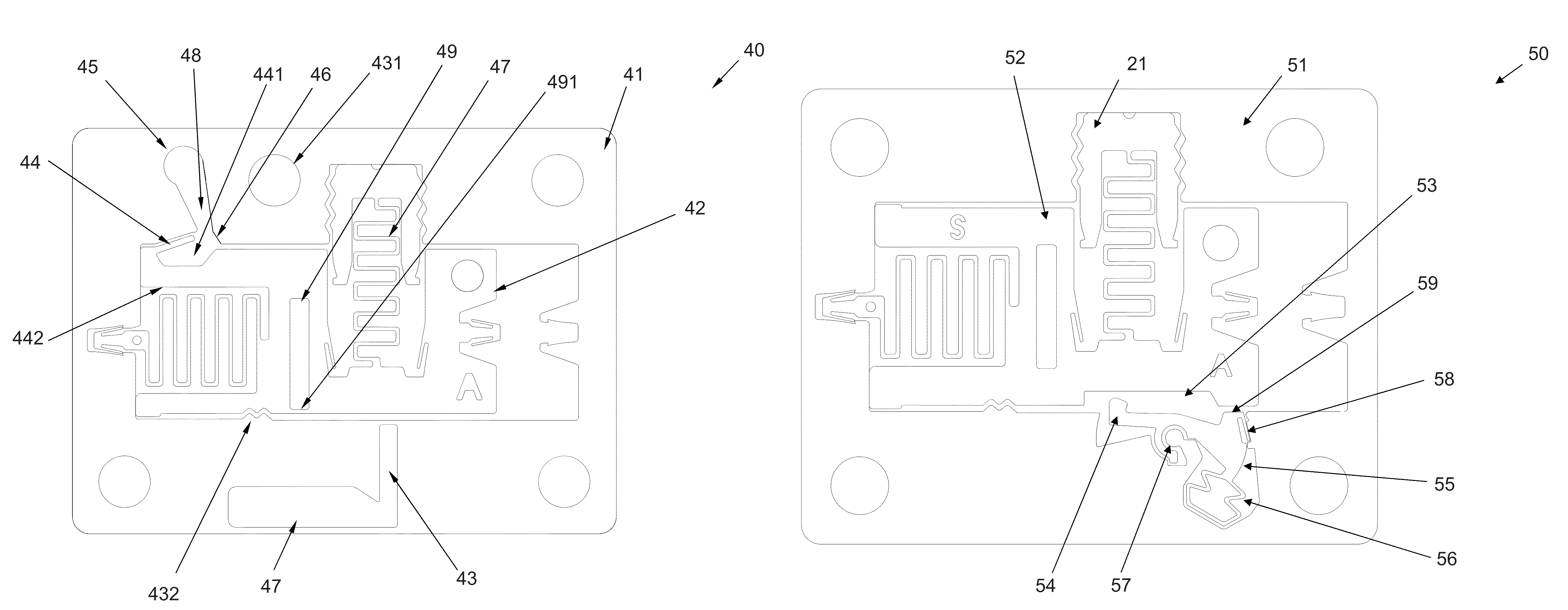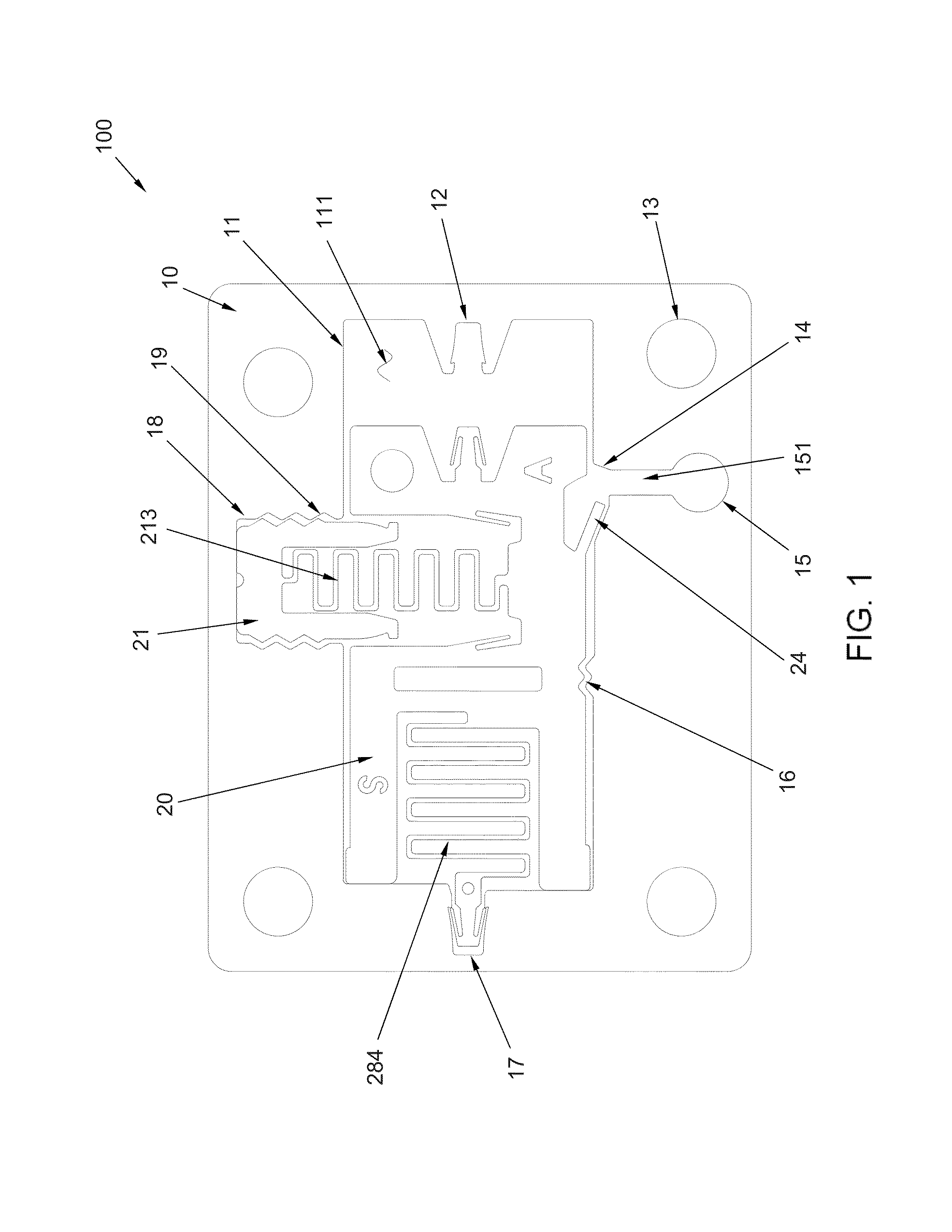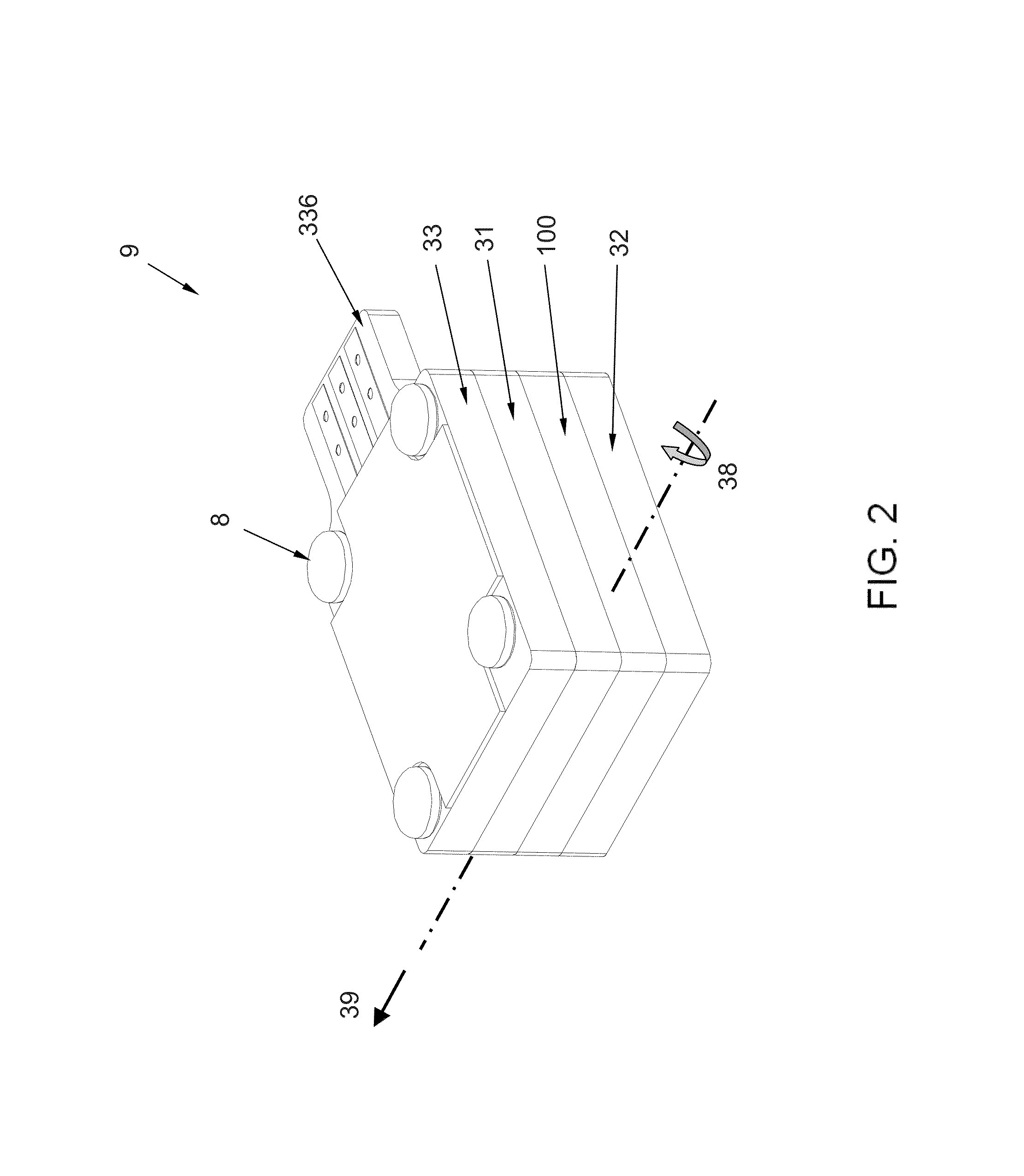Ultra-miniature electro-mechanical safety and arming device
a technology of electro-mechanical safety and arming device, which is applied in the direction of ammunition fuzes, weapons, weapon components, etc., can solve the problems of high danger condition, size, reliability, cost, and the optimum possible fuze size, and achieves the effect of less costly, more reliable, and simple structur
- Summary
- Abstract
- Description
- Claims
- Application Information
AI Technical Summary
Benefits of technology
Problems solved by technology
Method used
Image
Examples
first embodiment
[0033]the invention is shown in FIGS. 1 through 9.
[0034]The safety of the safety and arming device of a fuze derives from the highly selective mechanical and electro-mechanical logic intrinsic to the design. As will be described, environmental stimuli of unique direction, threshold, sequence, and duration are necessary to effectuate the arming sequence in the mechanical logic. Environmental inputs that do not match the launch / dispense sequence result in one of two outcomes: a) the mechanical logic elements may partially respond to the inputs and then reset to their original “safe” (unarmed) position, or b) the mechanical logic elements may partially respond to the inputs and due to the out-of-sequence or improper nature of the inputs the mechanical elements may finish in a “failed safe” condition.
Description of the S&A Assembly and Explosive Train
[0035]The core of the inventive design is the miniature safety and arming mechanism 100, preferably fabricated using micro-machining or ME...
third embodiment
Description of Third Embodiment, Rotating 3rd S&A Interlock
[0056]In a third embodiment, FIG. 11, an S&A mechanism 50, analogous to 100 in the first embodiment, incorporates a modified frame 51, a modified arming slider 52 with a rotor recess 53, and a bellows-rotor assembly 55 consisting of a rotor head 54, rotor latch 58, rotor tab 59, actuator bellows 56, and actuator pivot assembly 57. The electromechanical logic of this third embodiment is the same as for the first embodiment, but the means of implementation depends in this embodiment on the command initiator bridge and spot charge 332 output gas-expansion to expand bellows 56 and rotate the rotor of rotor assembly 55 to remove the second safety lock from the modified arming slider and the operation of a bellows and a rotor latch. The bellows-rotor assembly fits into a matching socket suitably fabricated into the modified frame 51 such that a pivot assembly 57 is operable to permit the rotor assembly to rotate enough to change i...
PUM
 Login to View More
Login to View More Abstract
Description
Claims
Application Information
 Login to View More
Login to View More - R&D
- Intellectual Property
- Life Sciences
- Materials
- Tech Scout
- Unparalleled Data Quality
- Higher Quality Content
- 60% Fewer Hallucinations
Browse by: Latest US Patents, China's latest patents, Technical Efficacy Thesaurus, Application Domain, Technology Topic, Popular Technical Reports.
© 2025 PatSnap. All rights reserved.Legal|Privacy policy|Modern Slavery Act Transparency Statement|Sitemap|About US| Contact US: help@patsnap.com



